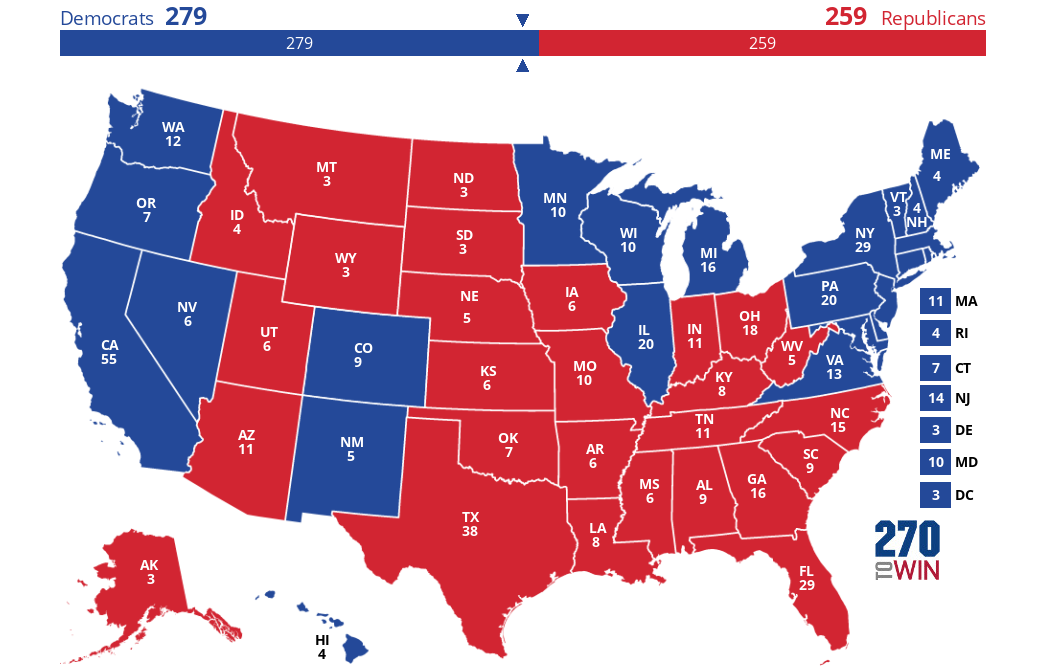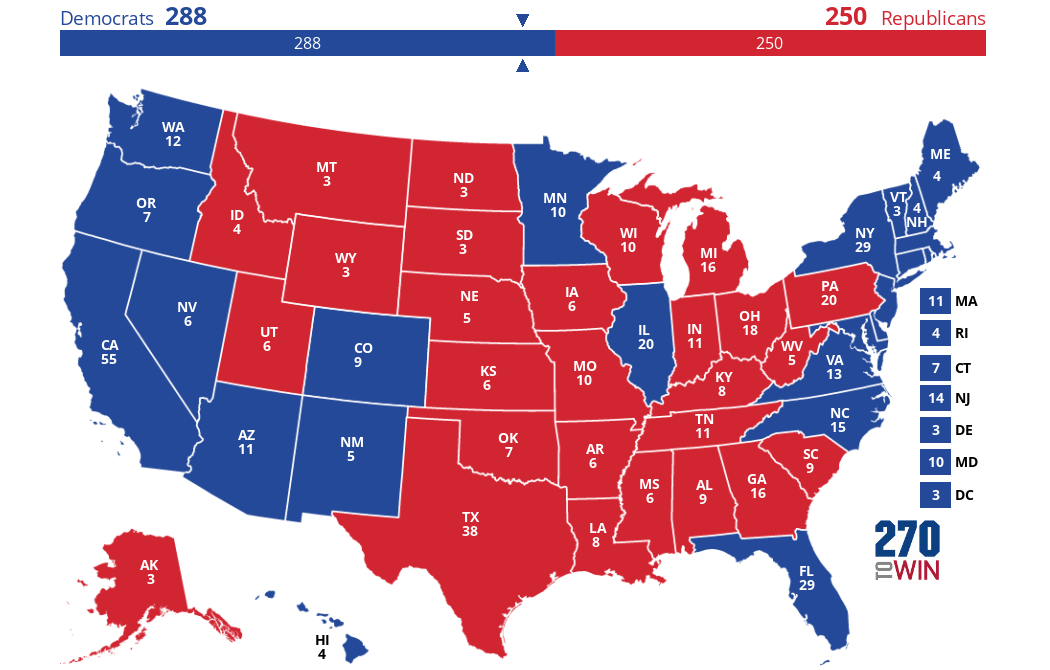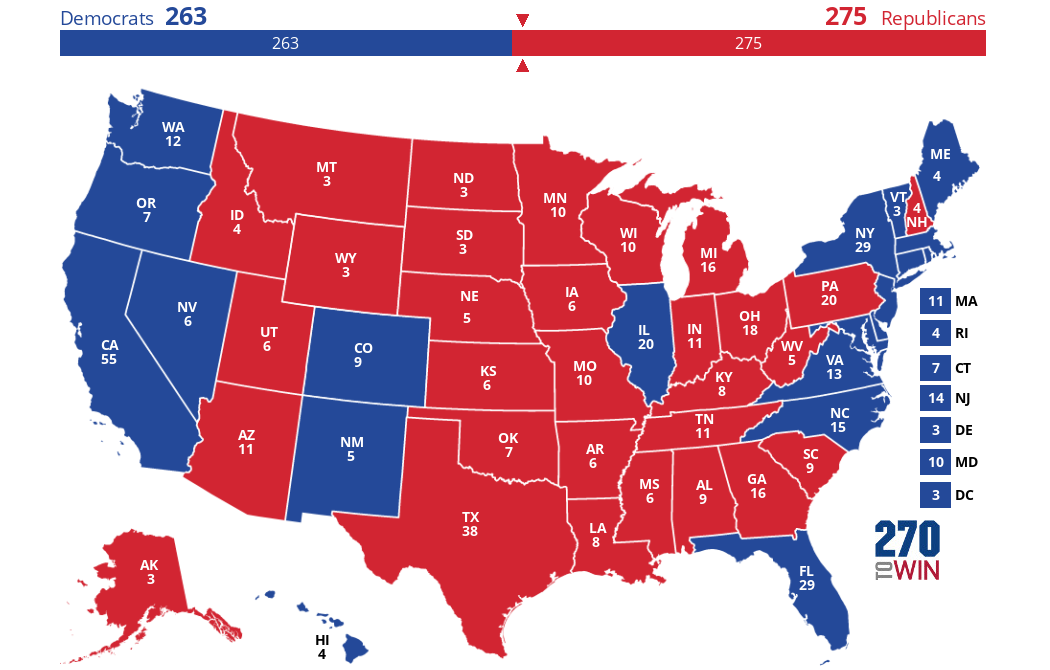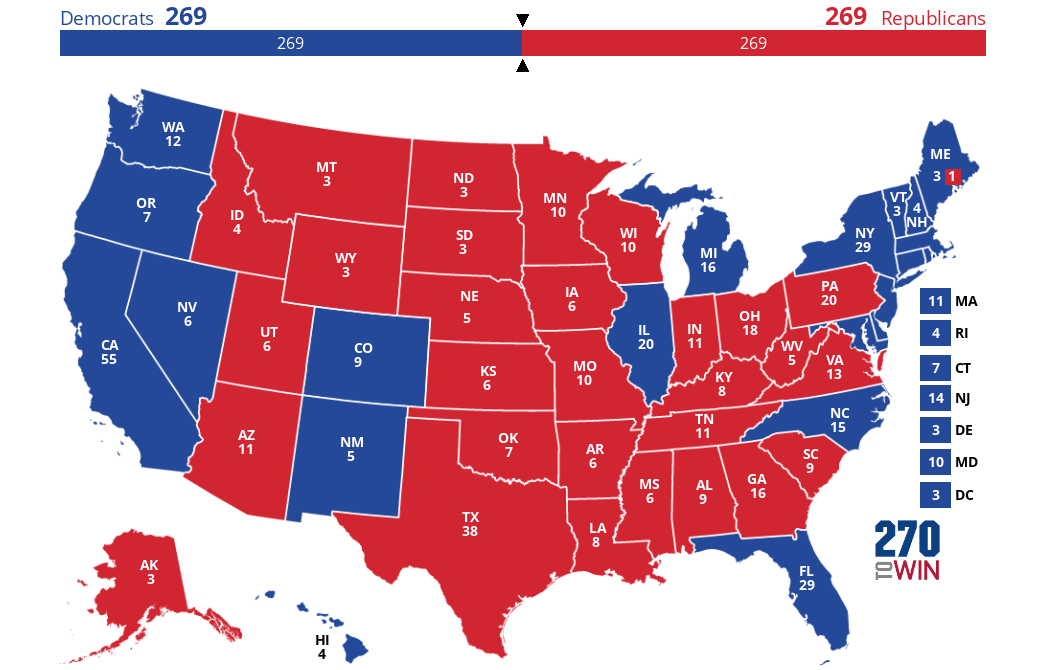Red State, Blue State: From Midwestern Firewalls to Sunbelt Horizons
by Shawn P. Healy, PhD, Democracy Program Director
Having reviewed Illinois’ March primary results and presumptive Democratic presidential nominee Joe Biden’s Veepstakes in the previous two posts, today’s topic is the November General Election and various Electoral College scenarios that will determine whether President Trump earns a second term. It goes without saying that electoral math makes for some great cross-curricular civic learning connections.
Article II, Section I of the Constitution establishes an Electoral College to select presidents, balancing the will of the people with state interests. It allocates two Electoral Votes to each state with an additional vote per congressional district, thus a minimum of three, and via the 23rd Amendment, also awarding three Electoral Votes to the District of Columbia. Combined, 50 states and DC yield 538 Electoral Votes, with 270 constituting a majority.
Two of the past five presidential elections (2000 and 2016) produced Electoral College winners at odds with the popular vote, in both cases benefiting the Republican candidate (Bush 43 and Trump, respectively). Republicans’ dominance in rural, less-populated states produces an Electoral College advantage, not to mention Democrats’ concentration on the two coasts and urban areas. In the case of large states like California and New York, Democrats “waste votes” in the sense that the Electoral College is winner-takes-all by state, so any votes beyond a plurality only pad the meaningless popular vote. This leaves a handful of battleground states where the overall contest is ultimately decided, and the 2020 Election will likely heed to this decades-long patterns.
Drawing from combined rankings of leading election prognosticators, 270toWin offers a consensus map below with six toss-up states (Arizona, Wisconsin, Michigan, Pennsylvania, North Carolina, and Florida) and one toss-up district (the 2nd) in Nebraska. Maine and Nebraska award Electoral Votes by congressional district with a two-vote bonus for the statewide winner.
Note that President Trump won these states and Nebraska-2 in 2016 en route to a 304-227 Electoral Vote margin (seven “faithless” electors voted for other candidates) as Democrats’ Midwestern “blue wall” crumbled. Should former Vice President Biden rebuild it, a narrow path to victory emerges via the revised map below.
Biden also has a Sunbelt option should he reclaim Florida and North Carolina for Democrats (Obama won the former in both 2008 and 2012 and the latter in 2008) or pick up Arizona as Clinton did in 1992 and 1996 and pair it with Florida (see below).
Should Biden replicate the Sunbelt magic he enjoyed with his former running mate, President Trump can offset these gains with pick-ups in Minnesota and possibly New Hampshire, two states he lost by less than a percentage point in 2016, assuming he also holds Arizona.
Finally, in the ultimate teachable moment for civics teachers, there are plausible paths to an Electoral College tie, 269-269, as exemplified below.
Consulting Article II of the Constitution once more, the contest would be sent to the House of Representatives, with state delegations all afforded a single vote. Since Republicans have a majority in 26 state delegations to 22 for Democrats with two split (Michigan and Pennsylvania), assuming party unity, President Trump would be reelected.
For further discussion of these Electoral College scenarios and more, please join us tomorrow afternoon from 3:45-4:30pm for our April 21 webinar on Election 2020 titled “End Game.”



 Click the map to create your own at
Click the map to create your own at 





Comments
Post a Comment